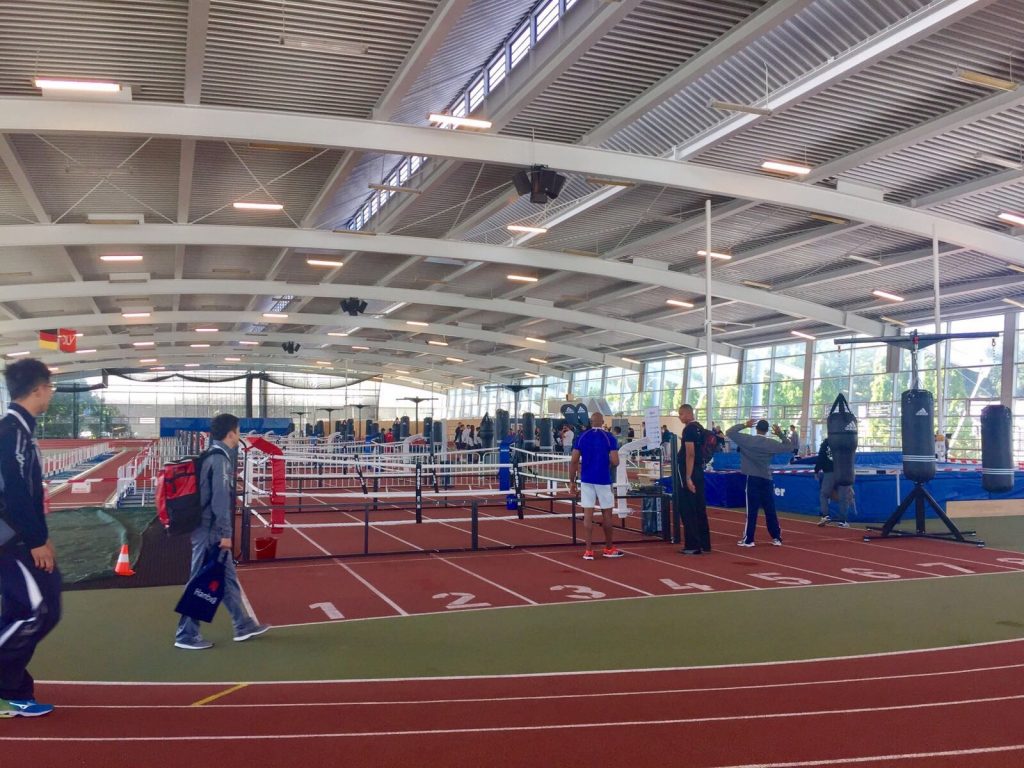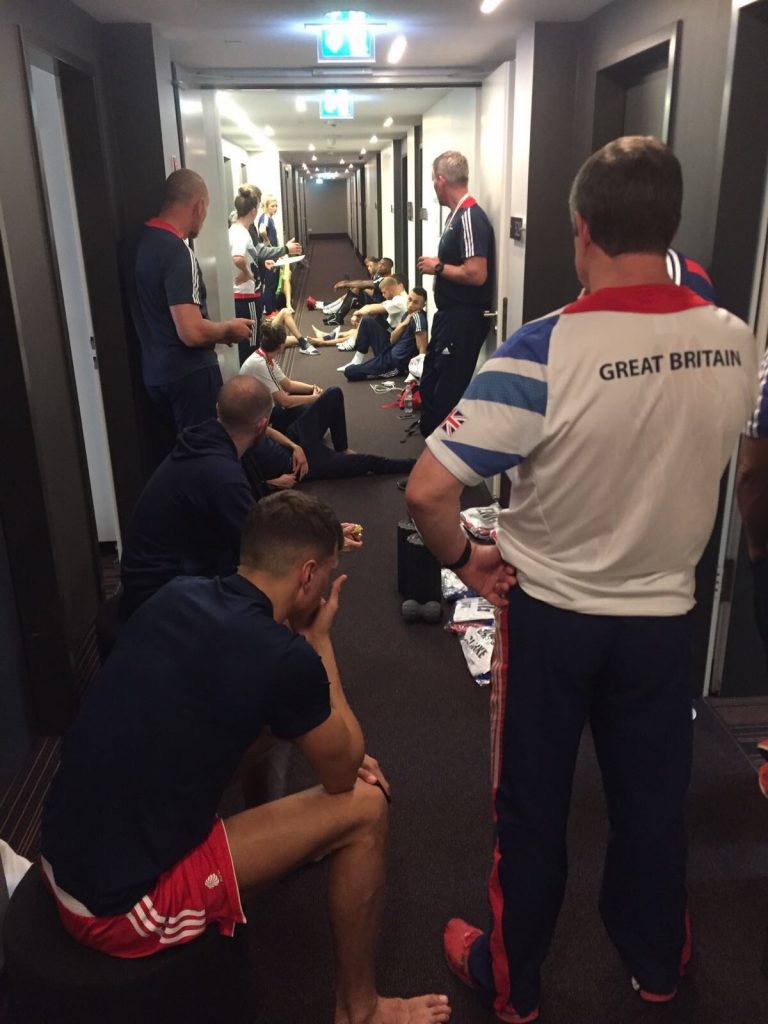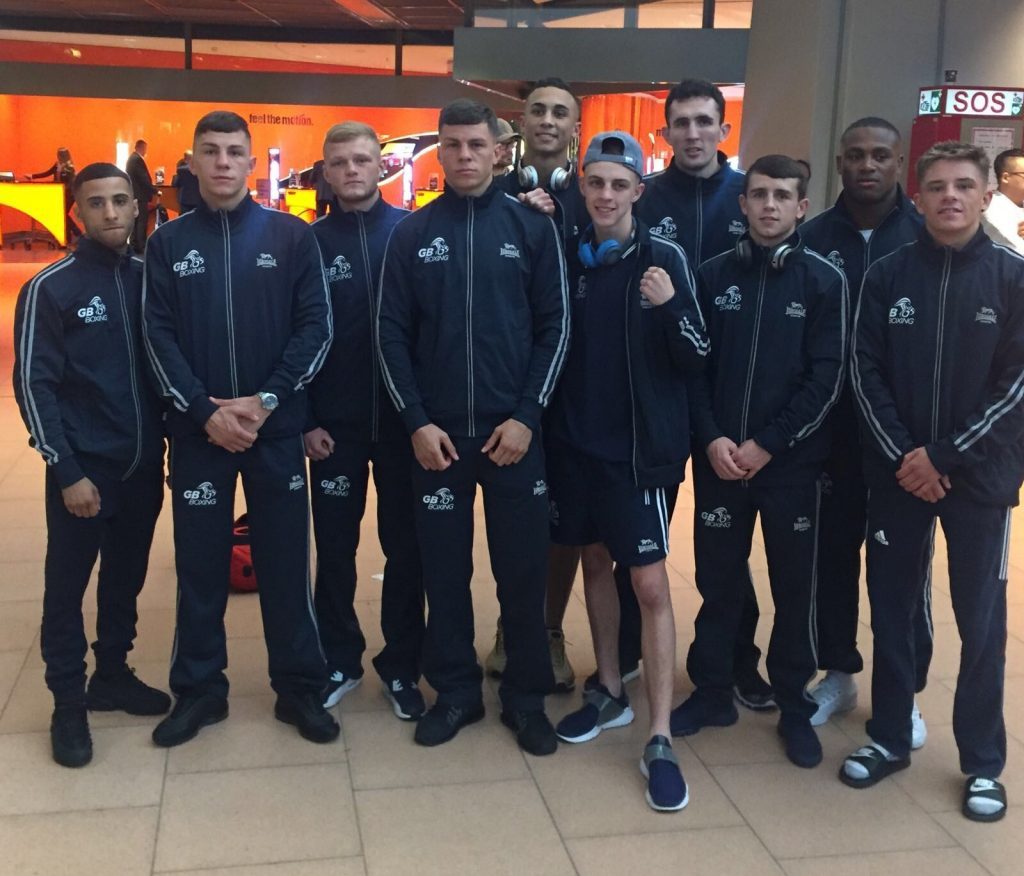Starting out in Performance Analysis - a practitioner’s view from the Boxing World Championships
In September, GB Boxing sent a ten-strong team to Hamburg for the AIBA World Boxing Championships. EIS performance analyst Jessica Smith tells us about her experience of the tournament, what she learnt and the EIS support network around her.
Jess attended the World Championships alongside Senior Performance Analyst Chris Connelly.
“It was really good having two analysts at the Worlds as while Chris was doing the briefs with the coaches and boxers who were boxing that day, I could be getting prepared for the day and inputting yesterday’s results whereas at a small competition you could be doing it all yourself,” said Jess.

“A typical day at the tournament would include having breakfast in our hotel, then going across to the team meeting in the boxer’s hotel around 10:00am. Then in the team meeting, whoever was boxing that day would have their brief with the coaches which Chris facilitates to help get them prepared for the bout. Whilst they were doing that I would be inputting information into our database around which bouts were coming up that day and updating results from the day before and being available for boxers if they needed anything. A lot of the boxers would want to watch their bouts back from previous days and self-review their performance.
“The sessions were in the afternoon so it was a good opportunity for me and Chris, once all the briefs were done, to get the equipment ready to do all the analysis we needed to and then we’d go over to the venue for the afternoon and record all the bouts. Then the evening would be spent putting everything back into the database from what we’d recorded that day, so there were a few late nights!

“Chris and I divided up our duties throughout the tournament and since I started in the role we have built up a good rapport. We complemented each other well with what we had to do. There were two rings at this major competition up until the final so we would record one ring each and put in information whilst we were sat in the stands. It also helped at the tournament that there was a power source right where we were sat which isn’t always the case, so that was useful.”
Attending a major championship as a practitioner can be an exciting and full on experience but most importantly of all as Jess implies, the experience is a learning curve on which personal development can be built.
“In terms of what I learnt at the Worlds, I picked up little bits from Chris; Chris has over four years’ experience as a PA in boxing, so even seeing how he runs everything efficiently and is always prepared was great. We used a new way of providing the coaches with relevant opposition information, so it was great to see that put in place and work well.
“Back in camp after the tournament we got feedback to make sure our work was in line with what the coaches want and need as support. Those little things around communicating with the coaches in the right way is what make you the best analyst.
“Chris was a great person to be at the competition with. I think I have pretty much nailed down how to do the technical side of the job now but it’s more the other skills that I am still learning and observing from Chris and the other practitioners. Something else you learn as you go along is where to introduce something new. For example, from a performance analysis perspective, a world champs wouldn’t be the time to do that without the background work prior to the tournament, so it’s about knowing when to suggest an idea or a change.”
Jess also explained the work done at a major competition isn’t just carried out during the tournament but before and after.

“A lot of the work we do for a major tournament happens before we leave and when we return. For example, in the weeks leading up to a tournament we are preparing and working out which boxers are going to be there from other countries and making sure we have all the information plugged in to our big database such as an opponents’ age, their stances, and even a picture of them so if our boxer faced them they had immediate information.
“Post-tournament each boxer has a debrief which involves the coach that was in the boxer’s corner and our psychologist, Kate, who was also at the Worlds. Chris and I spend a lot of time tagging the bouts so we can show the key stats, such as the number of scoring punches, big eye-catching shots, how many scoring shots the opponent landed and when in each round these occurred. The pre and post-tournament work is where all the profiling and tagging and all the extra analysis comes in and that’s what really counts when it comes to helping the process of the boxer learning from their bout and being able to build on their last performance.”
When asked why she wanted to work in performance analysis, Jess explained how the relationships you build with the people inside the sport is a key factor.
“The thing I enjoy most about being a performance analyst is the relationship you can build working with the coaches and athletes and knowing what you do is helping them improve. On a day-to-day basis you’re there in the gym recording them sparring or in the office analysing bouts which informs the coaches and boxers and the coaching process. It is great to be part of the process, it is very rewarding.

“The EIS is a great place to work and I realise that I’m in a very privileged position, as in my role you’re working with a sport, in my case, GB Boxing but I also have support from the network of EIS staff that are really looking out for you. The EIS support my learning, book me on courses around the areas I feel I need to improve and we also have PA forums where we meet up as a group of analysts. There are continual learning and developmental opportunities.
“We’ve recently started a ‘combat group’ of analysts where we team up with taekwondo and judo and can help each other, so if there is something that we are struggling with it may be that those sports have faced and solved that issue before and we can help each other all get better as a group. We are regularly in contact with EIS analysts and even have our own ‘WhatsApp’ group. You always feel like there is someone you can turn to if needed. It’s nice to know you’re part of that network and you’re never far away from support or guidance.”